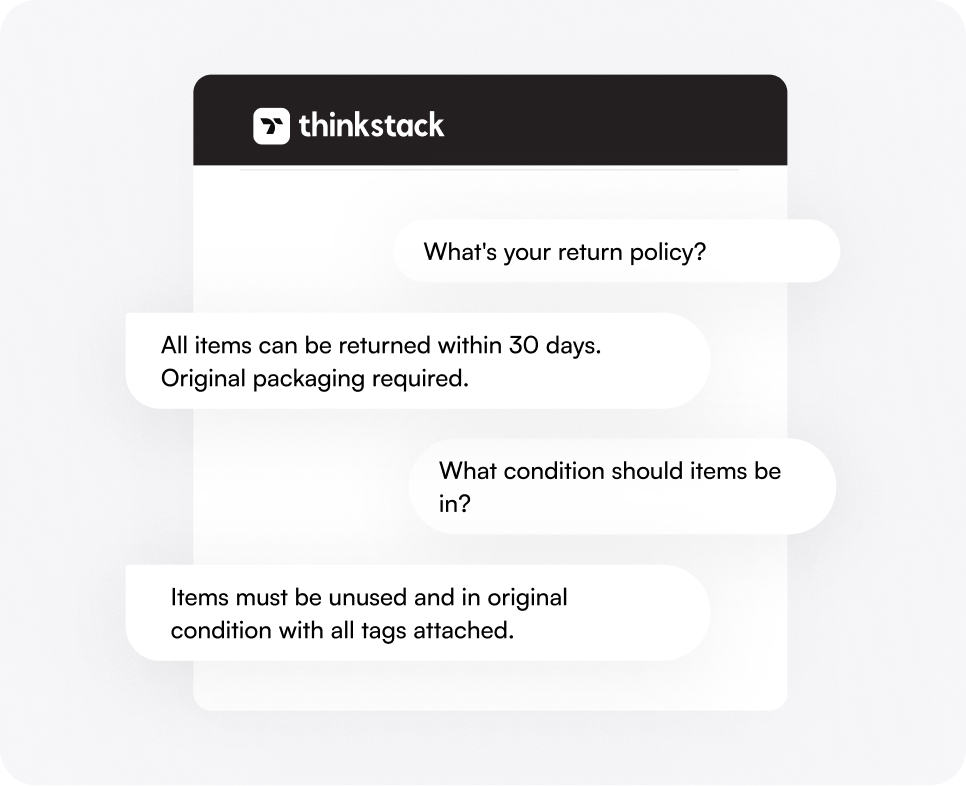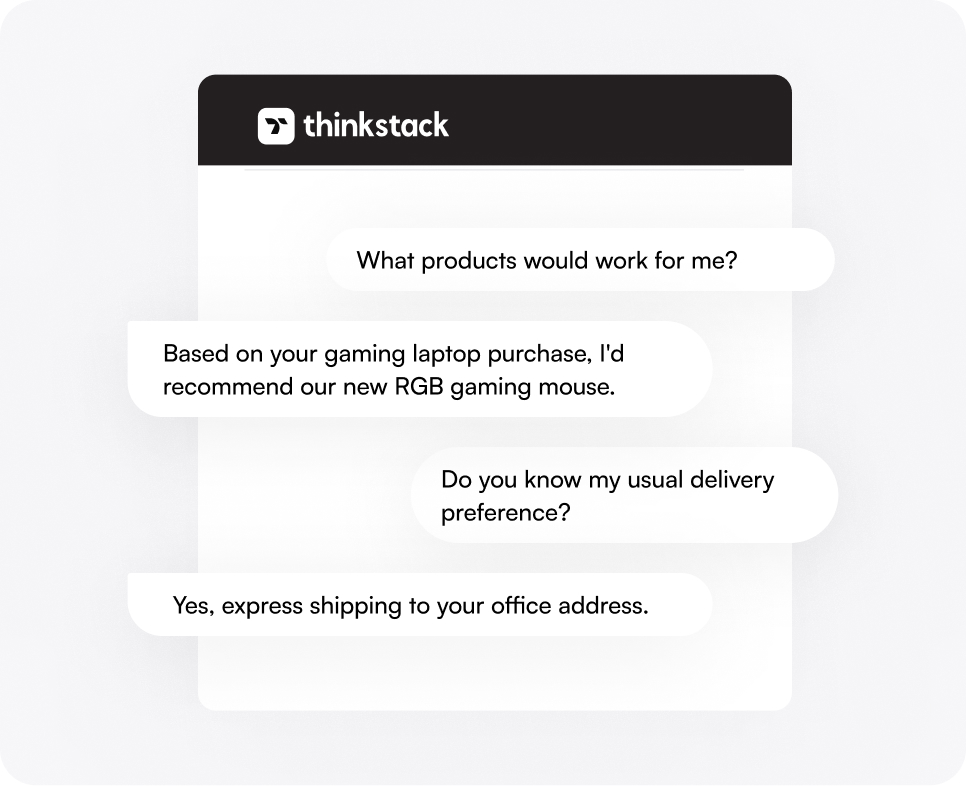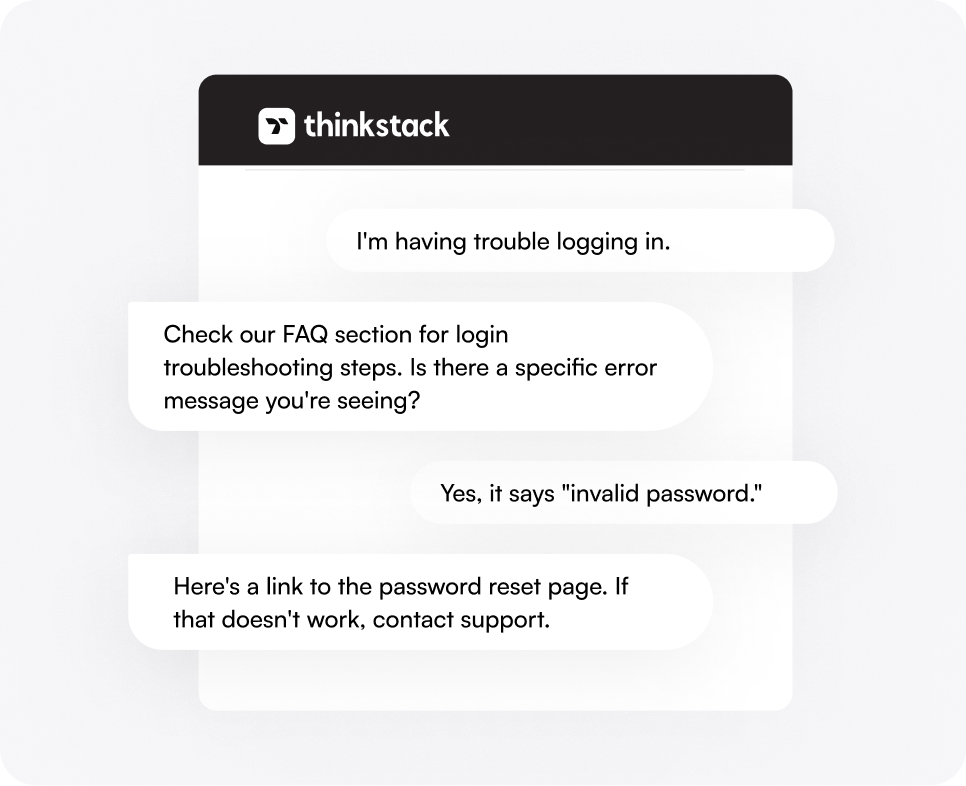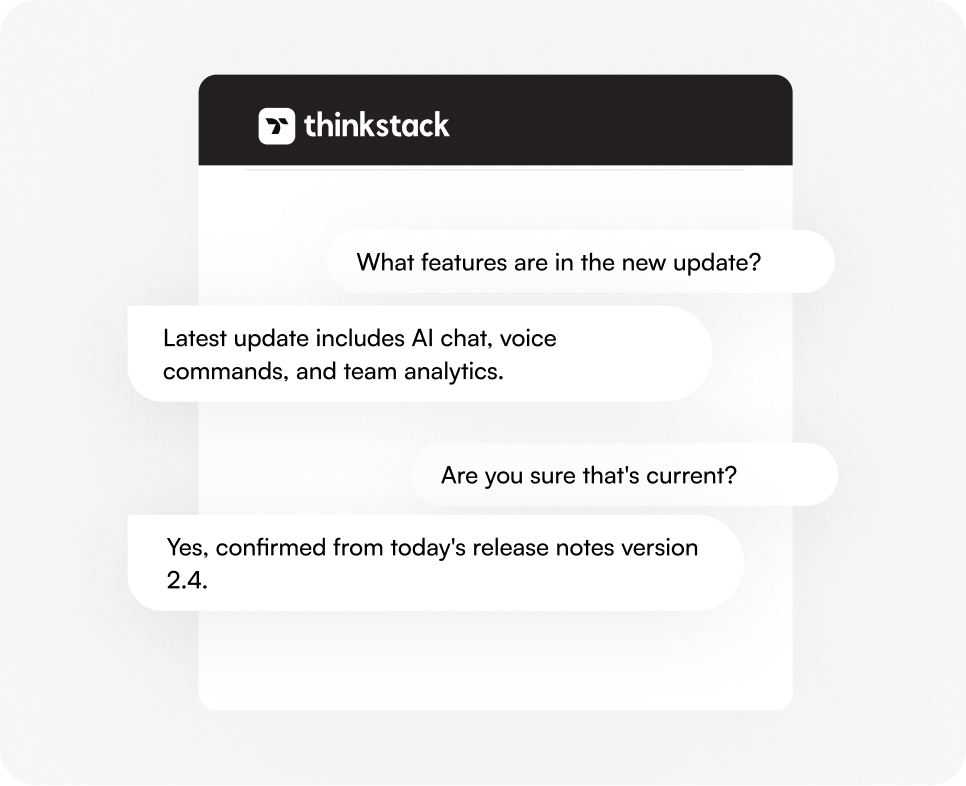Connect Any Data Source To Build the AI Agent You Need
Thinkstack turns your data-FAQs, PDFs, CSVs, URLs, meeting notes via Zapier, and Notion—into answers and solutions. Your team works faster, and your customers get what they need in no time
Multiple Knowledge Sources for Training
How does this feature of multiple data sources integration come handy?
Quick answers, less hassle
Get instant replies to questions like:
- “What’s the return policy?”
- “What were last week’s meeting takeaways?”


Make it personal
Your AI Agent remembers customer and team needs, giving better, customized answers.
Easy access to resources
From product guides to meeting notes, find everything you need right away.


Help customers and teams help themselves
Let your AI Agent power FAQs and guides for smooth self-service.
Get accurate answers every time
With up-to-date knowledge, your AI Agent gives answers you can trust..

Ready to work smarter with your knowledge?
With up-to-date knowledge, your AI Agent gives answers you can trust..
Frequently asked questions
What is a Data Source?
A Data Source is any repository of information used to train your chatbot. This can include files (like PDFs, Word documents, text and markdown files), URLs, Q&A pairs, CSVs or integrations with platforms like Notion or Zapier. Data sources provide the content that the bot uses to generate responses.
What Are Knowledge Base Characters?
Knowledge base characters are the cumulative count of all text characters within the Data Source (files, Q&A entries, web pages, etc.) that the bot is trained on.
What is the "Crawler Type" option, and what are its available types?
The "Crawler Type" option determines how data is extracted from a website during crawling. The available types are:
1. Auto-detect: Automatically selects the best crawling method based on the website's structure.
2. HTML: Extracts data from static HTML content.
3. JavaScript: Extracts data from dynamically rendered web pages.
When should I choose a specific Crawler Type (HTML, JavaScript, or Auto-detect)?
Use HTML for websites with static content.
Choose JavaScript for dynamically rendered web pages or single-page applications.
Select Auto-detect to let the system determine the best method automatically.
Can I train my chatbot with multiple URLs?
Can I exclude specific pages from training?
Yes, you can exclude specific pages by using glob patterns or by unchecking them from the list of URLs after the crawling process is complete.
What should I do after the crawling process is complete?
Review the list of URLs, uncheck any pages you don’t want to include, and click "Train now" to begin training your chatbot. The training time will depend on the number of pages.
What are the files that I can upload to train a chatbot?
You can upload a variety of file types to train your chatbot, including PDFs, Word documents (.doc, .docx), text files (.txt), and Markdown files (.md). Ensure that the files are within 50MB, well-structured, and contain relevant, clear content for effective training.
What Q&A I should add to train the chatbot?
Sometimes, users might ask a question that the chatbot cannot answer. To address this, observe such questions and add them as a Question with appropriate responses Here are some types of Q&A you can include:
Frequently Asked Questions (FAQs): Add common queries that users are likely to ask.
Specific Business Information: Product details, policies, or services, ongoing offers, and benefits.
Customer Support Scenarios: Provide responses to common issues or complaints to assist users effectively.
What should I do if the chatbot gives incorrect answers?
Use the "Chats" section to access the chat history, revise the chatbot’s incorrect responses, and save the corrected response as a Q&A for future use.
Can I configure Q&A responses as clickable suggestions?
Yes, you can set specific Q&A responses to appear as suggestion prompts, allowing users to get answers with a single click.
Can I train the chatbot with the Notion Document URL?
No, you cannot directly train the chatbot with a Notion document URL. However, we offer Notion integration; you can connect your Notion account and select specific pages or databases for training.